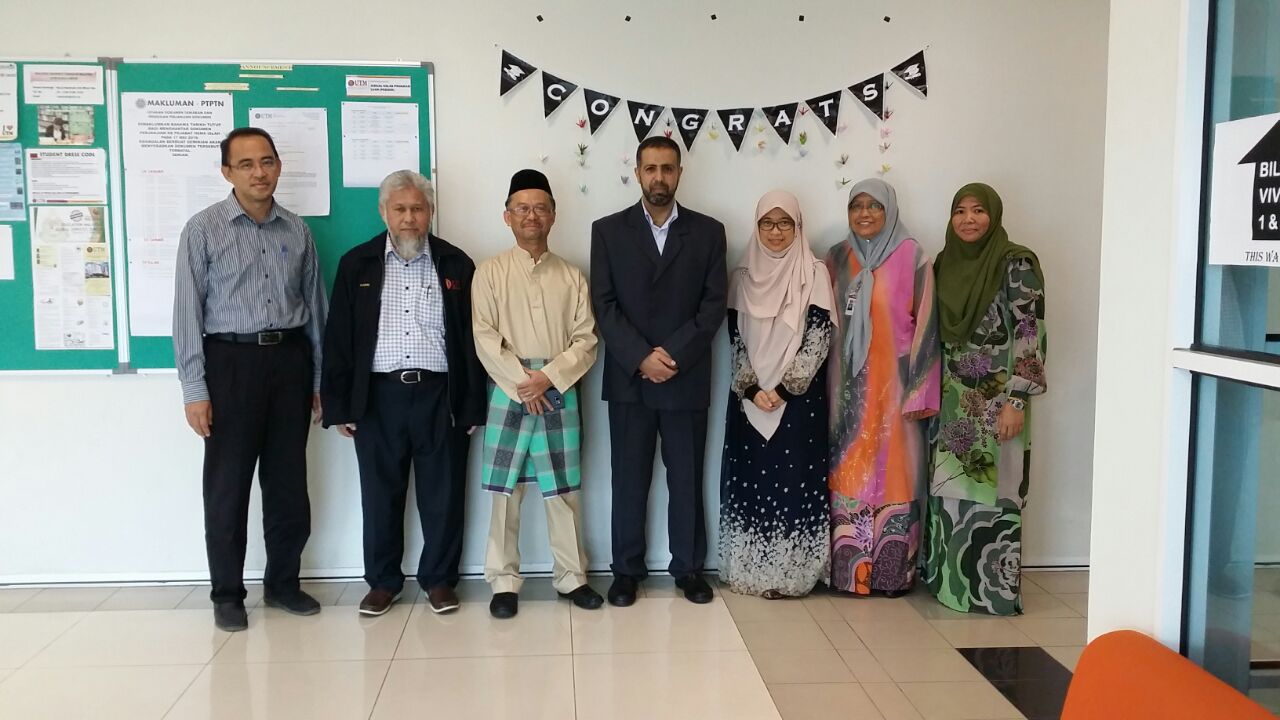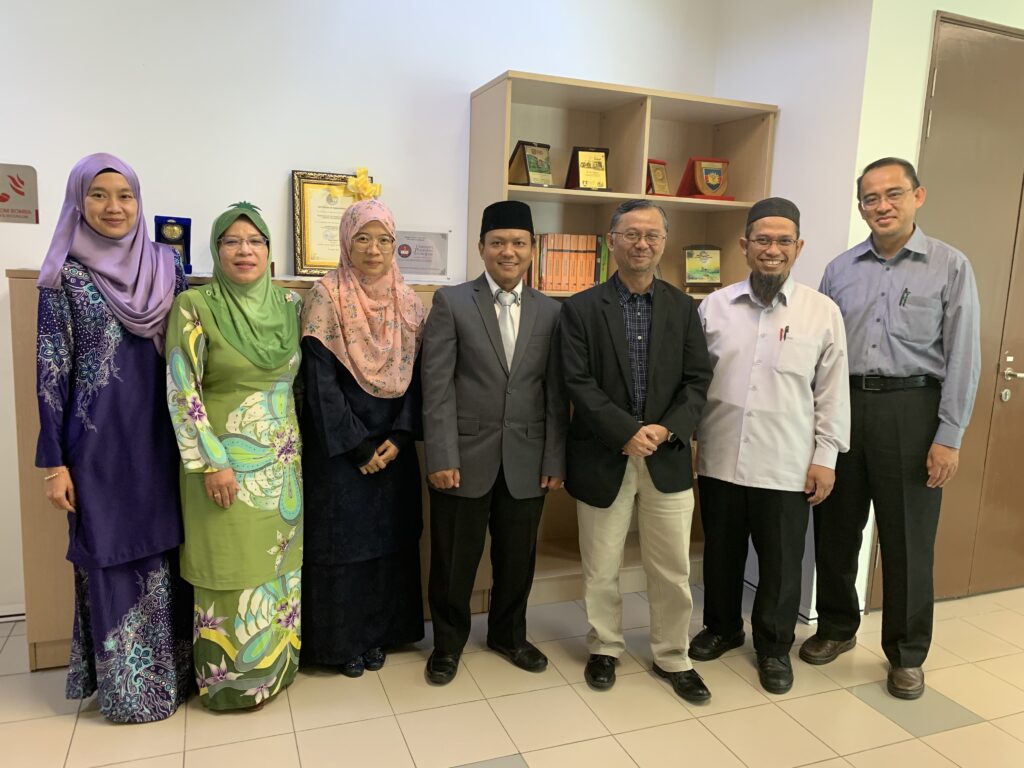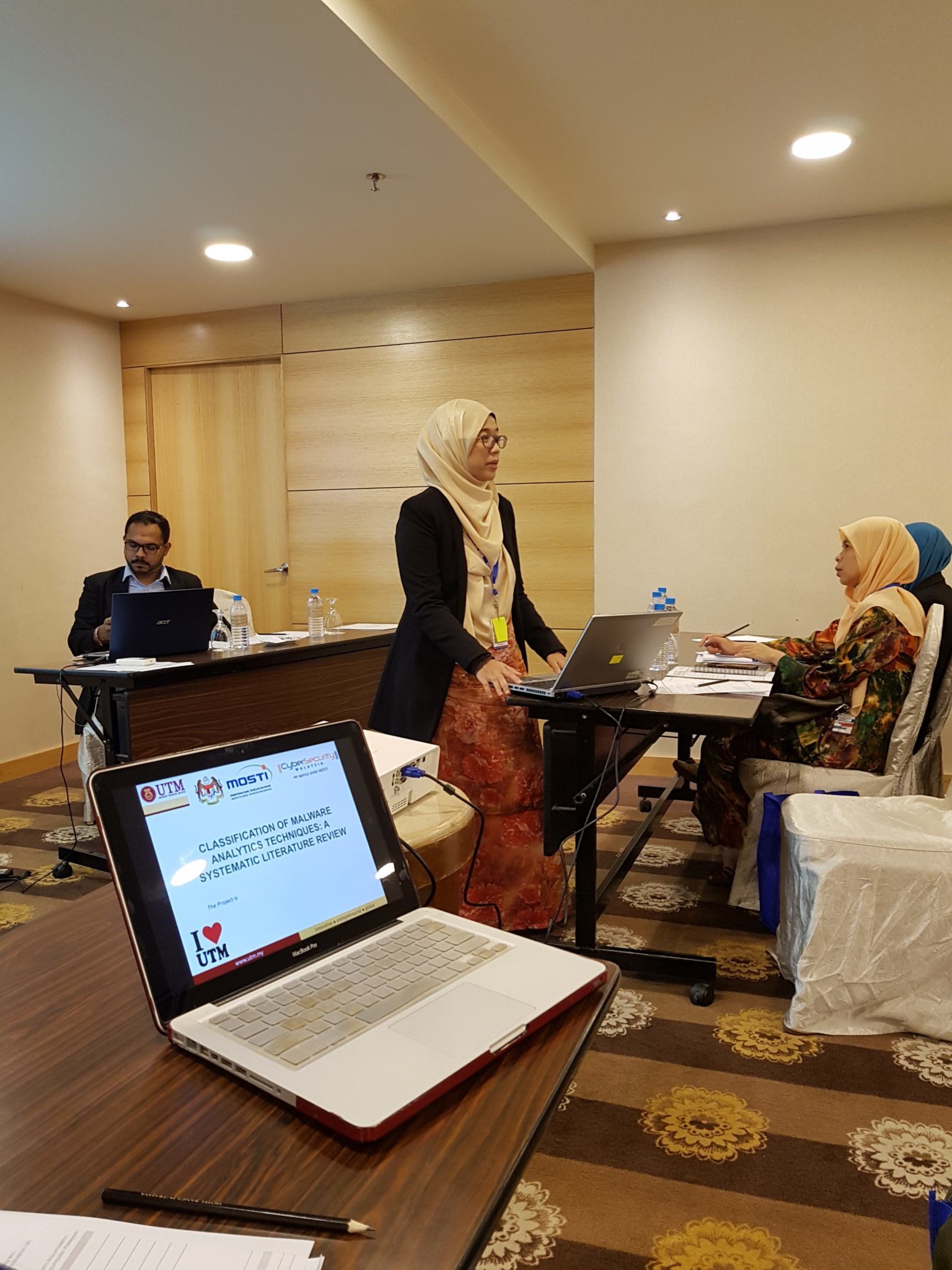
Adaptive, Light-Weight and Accurate Indoor Positioning System (ALWAIS)
WLAN-fingerprinting has been highlighted as the preferred technology in an Indoor Positioning System (IPS) due to its high accuracy and minimal infrastructure cost. However, the accuracy of fingerprinting is highly influenced by the fluctuation in signal strength as a result of encountering obstacles. Many inventors have modelled static obstacles such as walls and ceilings, but hardly any have modelled the effect of people presence as an obstacle although the human body significantly impacts signal strength. Hence, the people presence effect must be considered. Therefore, the invention in this research is an adaptive, light-weight and accurate indoor positioning model (ALWAIS) that considers people presence in a dynamic environment which relies on existing infrastructure. ALWAIS can be used for people and assets tracking and monitoring for public safety and security. It also can be applied for social distancing monitoring during pandemic COVID19 inside buildings.
Email: azurati@utm.my
Product Features, Potential Market and Impact
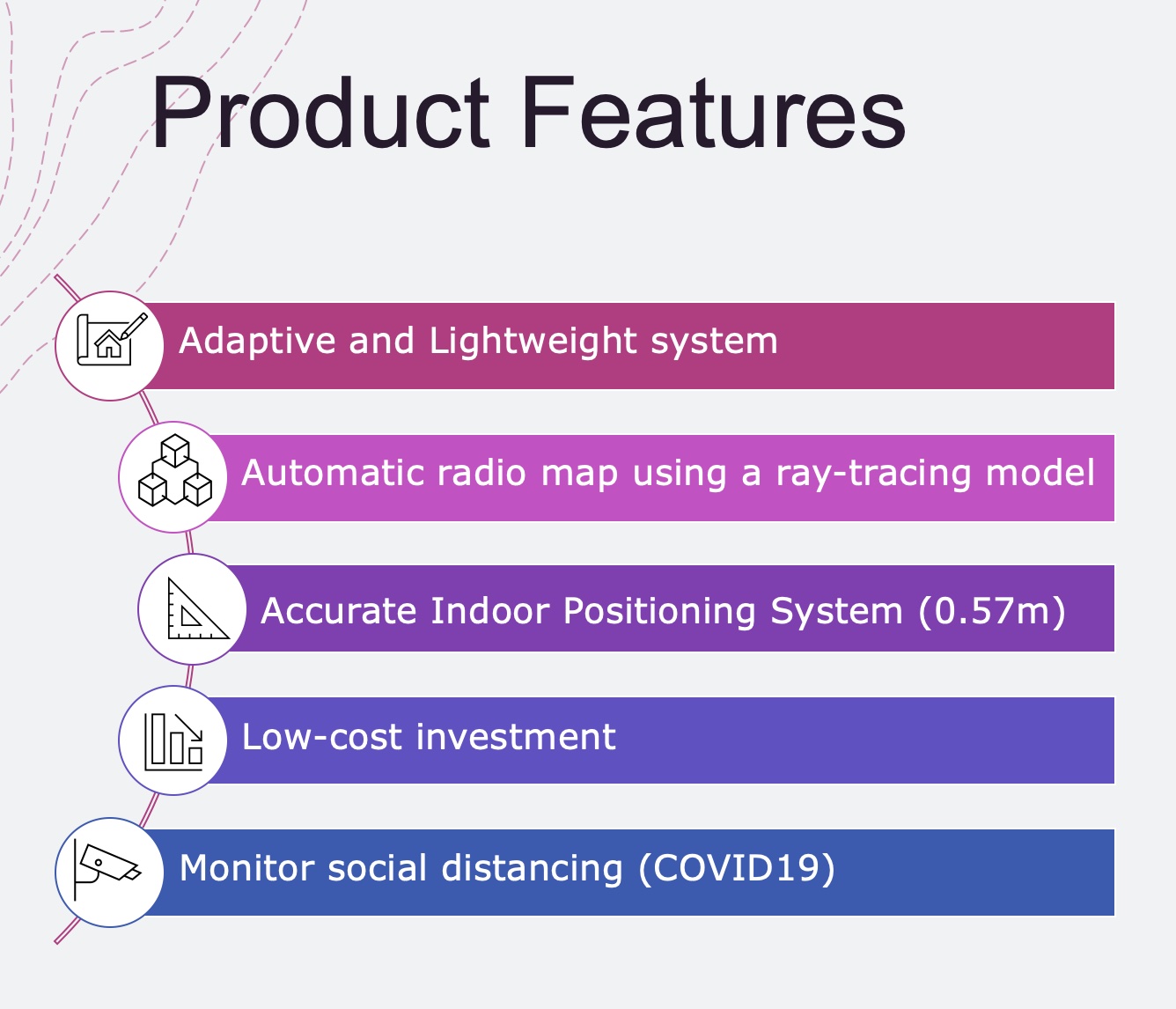
Potential Market
Indoor Positioning System (IPS) based service has great economic potential, it is estimated to reach US$ 10 billion in 2020 [ABI Research]. A survey in 2016 was conducted by Vanson Bourne to 301 respondents (business and marketing decision makers) across US, UK, Asia, and Australia. The fact is that almost all (99%) respondents surveyed say that their organizations have or plans to implement IPS within the next 24 months.
Impact
It has potential to generate novel knowledge-based industry. The prototype can be extended to be deployed for applications at campus, hospitals, tourist areas, stadium, airport, large shopping malls, large offices, pushing of location-based advertisements & places of attractions and etc. It can enhance national/local and universal/global living values. It also works for emergency case and patient monitoring. It has the potential to contribute towards national strategic agenda/plan Strategy A1: Fostering a dynamic environment for knowledge-intensive services to boost productivity. Strategy A5: Expanding modern services to ensure that Malaysia captures a bigger export market for ICT products and services. (Eleventh Malaysia Plan 2016-2020).
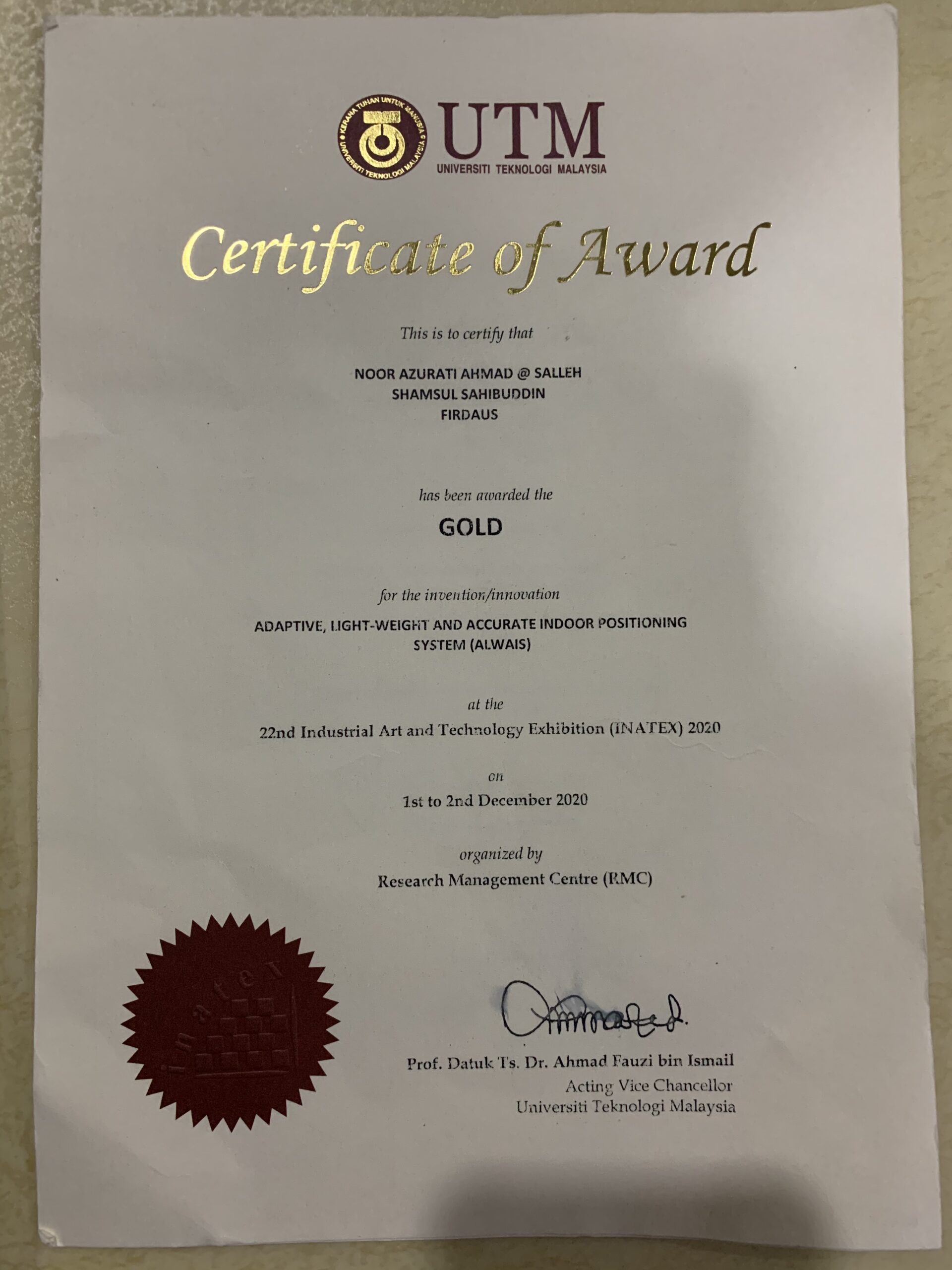
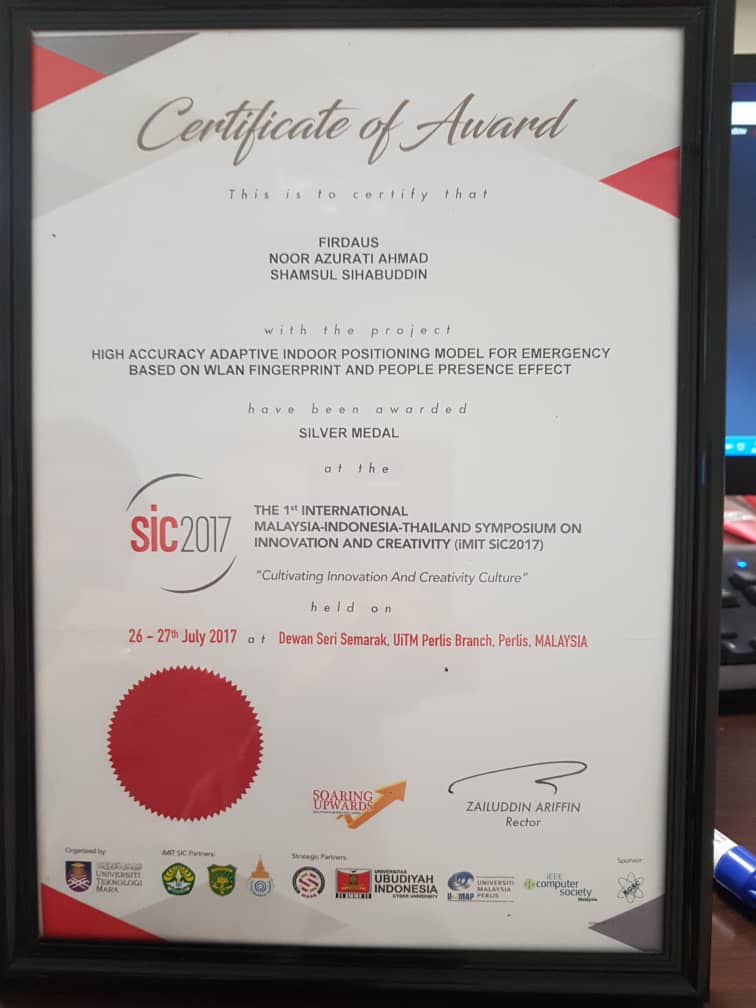



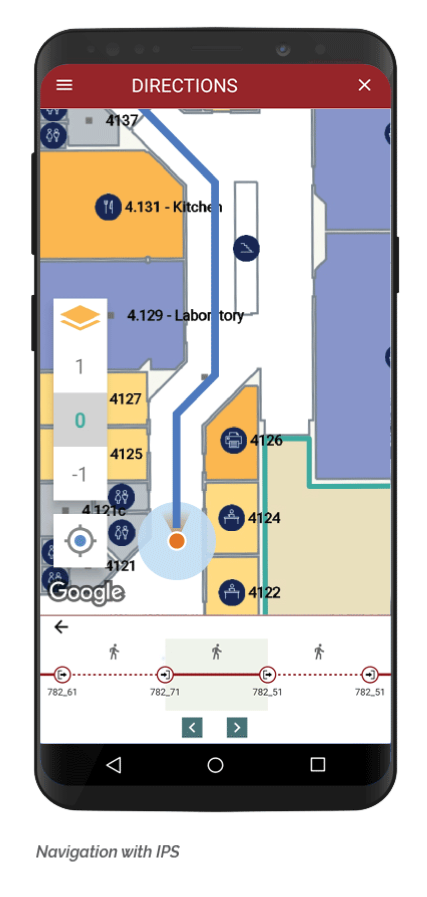
Description of the Product
- Some of the existing commercial apps, based on WLAN Fingerprinting such as WIFARER, Aisle411 and PoleStar can achieve high accuracy but high cost and it needs human effort for creating the WLAN Fingerprinting
- In comparison with the listed apps, this app creates the Fingerprint radio map automatically, so it is human effortless and time saving
- The product will achieve high precision, 0.57m by average, less than 2m for indoor localization, this means it achieves competitive accuracy
- The product will rely on the existing WLAN infrastructure, low cost solution
Copyright and Patent
| PATENT | Accurate Indoor Positioning Model based on People Effect and Ray Tracing Propagation |
| COPYRIGHT | Human Model for Dynamic Changes in Indoor Positioning System |
| COPYRIGHT |
Wireless Sensor Network Based Outdoor and Indoor Positioning System WOIPS Algorithm Featured with IoT |
| COPYRIGHT | Dynamic Radio Map Generator for Multi-Floor Indoor Positioning |
Related Publications (ISI, Scopus)
-
Firdaus, Firdaus, Noor Azurati Ahmad, and Shamsul Sahibuddin. 2019. “Accurate Indoor-Positioning Model Based on People Effect and Ray-Tracing Propagation.” Sensors 19(24): 5546.
-
Ahmad, Noor Azurati, and Shamsul Sahibuddin. 2019. “Fingerprint Indoor Positioning Based on User Orientations and Minimum Computation Time.” Telkomnika 17(4).
- I. H. Alshami, N. A. Ahmad, S. Sahibuddin, and F. Firdaus, “Adaptive Indoor Positioning Model Based on WLAN-Fingerprinting for Dynamic and Multi-Floor Environments,” Sensors, vol. 17, no. 8, p. 1789, Aug. 2017.
- I. H. Alshami, N. A. A. @ Salleh, and S. Sahibuddin, “Automatic WLAN fingerprint radio map generation for accurate indoor positioning based on signal path loss model,” ARPN J. Eng. Appl. Sci., vol. 10, no. 23, 2015.
- I. H. Alshami, N. A. Ahmad, and S. Sahibuddin, “Dynamic WLAN Fingerprinting RadioMap for Adapted Indoor Positioning Model,” in Intelligent Software Methodologies, Tools and Techniques, 2014, pp. 119–133.
- I. H. Alshami, N. A. Ahmad, and S. Sahibuddin, “People’s Presence Effect on WLAN-Based IPS’Accuracy,” J. Teknol., vol. 77, no. 9, 2015.
-
I. H. Alshami, N. A. Ahmad, S. Sahibuddin, and Y. M. Yusof, “The effect of people presence on WLAN RSS is governed by influence distance,” in Computer and Information Sciences (ICCOINS), 2016 3rd International Conference on, 2016, pp. 197–202.
-
Firdaus, N. A. Ahmad, and S. Sahibuddin, “Adapted WLAN Fingerprint Indoor Positioning System (IPS) Based on User Orientations,” in Recent Trends in Information and Communication Technology, 2017, pp. 226–236.
-
Firdaus, N. A. Ahmad, and S. Sahibuddin, “Effect of People Around User to WLAN Indoor Positioning System Accuracy,” presented at the Second Palestinian International Conference on Information and Communication Technology, Gaza, Palestine, 2017, pp. 17–21.
-
Firdaus, Ahmad, N. A., & Sahibuddin, S. Indoor positioning system based Wi-Fi fingerprinting for dynamic environment: Experimental preliminary result. Journal of Engineering and Applied Sciences, 12(17), 4442-4447, 2017

Industry and Academic Partners




